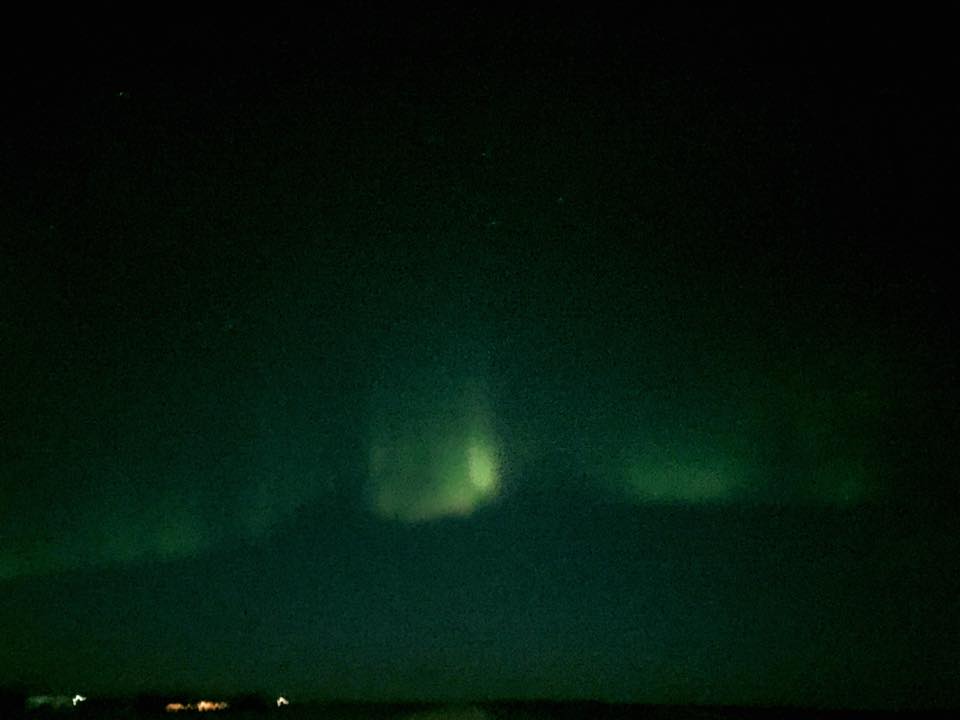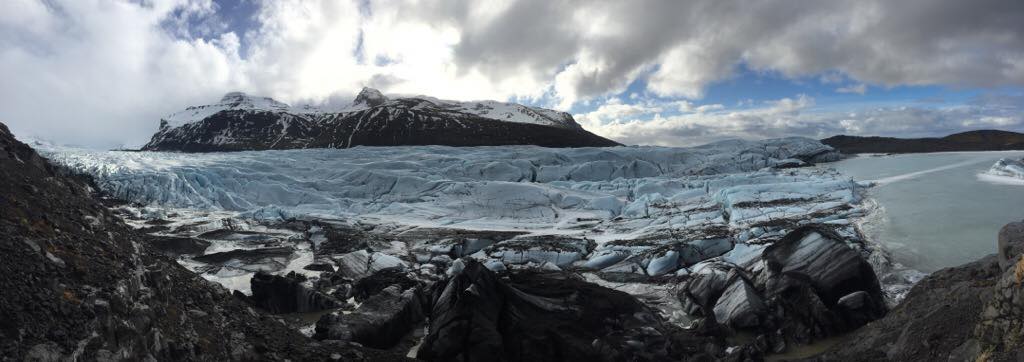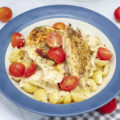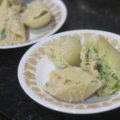iceland: a travel guide and a sneaky way to save money;

This post was originally published March 29, 2016 but has been updated for clarity and robustness.
It’s been a bucket list item of mine to see the northern lights. Iceland seemed a natural fit when my partner and I decided we wanted to travel together. It was the first time either of us traveled with a significant other, much less each other. We looked for a close locale, felt exotic, and had English as a primary language. And Iceland fits the bill perfectly. Close means approximately a six-hour flight from Virginia to Iceland. Six hours is long enough to settle in, but not too crazy long (like Japan or New Zealand).
Both our families love travel, so we landed on Iceland as an option neither of us had been to. Tyler speaks “some” Spanish, and I speak “some” Japanese, but those quotes are well-deserved. We felt a foreign language might overly complicate a trip. So we settled on Iceland. Lucky for us, friends had recently traveled to Iceland and gave us the inside scoop!
Best Times to Visit Iceland
I can’t recommend Iceland enough for an easy but exotic travel getaway. The first thing to consider: what’s your draw? A big one could be the northern lights. If you’re seeking out the northern lights, then you’ll be aiming for winter, primarily January-April. This the recommended time for the best chance to see the northern lights, although you might see them other times of the year as well. Because the northern lights were a big draw for me, we planned our trip for March.
However, summer (June-August) is another popular time to go to Iceland. If you’re looking to see more flora and fauna, summer is your best bet. Iceland has some cool and unique native nature, and while I have less firsthand information on it, it can be a paradise for nature lovers. Especially if you want warmer weather for outdoor explorations, summer could be the way to go.

Nature
Iceland has some unique fauna. Iceland is home to about 60% of puffin breeding grounds, not to mention the sheep, whales, seals, and Icelandic horses! Of course, you may catch glimpses of these animals outside of peak season. We saw seals, birds, and you’ll see Icelandic horses when driving the countryside as they’re domesticated. But if you’re looking to see puffins, your best bet is to go during breeding season in the summer.
That said, the outdoors is an amazing part of Iceland year-round. You’ll just need to dress for the occasion if you choose colder weather times. Even in March, we did plenty of hiking—once in the frigid rain even, and had a great time. My packing recommendations for outdoors include:
- A multi-layer coat – this one is more for winter months, but consider multiple layers especially if one is waterproof.
- Good hiking boots – make sure you’ve broken them in and are comfy with them before you start hiking!
- Wool socks – not required, but highly recommended for hiking to keep your toesies warm. They come in thin varieties and thick varieties, so this recommendation goes for both summer and winter hiking.
Note: You may see puffin or shark on a menu. Please don’t order it because you think it’s “local cuisine”. It’s not. They’re tourist traps to make money off unsuspecting foreigners looking for something ‘exotic’. You can order them if it’s something you must do, but at least do it intentionally and understand the implications. I see no need to contribute to threatening these species for a meal that isn’t enhancing my cultural experience. So you won’t find recommendations here.
Summary: If you want to see puffins, look at summer for their breeding times. Otherwise, hiking and local fauna shouldn’t be hard to find any time of the year.

Accommodations
Tourism makes up a huge industry in Iceland. It makes up almost 50% (42% last time I checked) of Iceland’s economy. Because it’s such a fundamental part of their economy, there’s healthy competition. And because of that, I think the standard accommodations are above average, and there’s a lot of options. On our trip, we had wonderful experiences. But before you run to book that hotel—have you considered air bnb or apartment rentals?
Apartment rentals mean kitchens! Follow me here for a second. Being an island means that food can get pretty expensive because of imports. Think $20USD for an average hamburger for lunch. Add that up three times a day and you’re looking at $60 per person for solid, but nothing exceptional meals. And while there were some fun places to eat out, Icelandic cuisine was less of a draw for me then some other locales. Like, say, Wagyu beef in Japan. So we opted to save some money and cook some meals ourselves. It also meant when we did eat out, we could splurge without guilt.
However, we did choose to stay in hotels at the beginning and end of our stay. It’s helpful when coordinating with flights for early arrivals or late departures. They often also can hold your luggage if you need a place to drop it in between transit or checking in. Also keep in mind that the airport you’re likely flying into is actually in Keflavik, and not Reykjavik proper. So plan for approximately a 40 minute transfer from the airport to downtown Reykjavik. Additionally hotels may have airport shuttle services or be able to call you a convenient taxi if you’re not renting a car.
Summary: Air bnb is a great option. As a heavy tourist country there’s lots of competition which means good standards. I still suggest hotels when arriving or departing for convenience and a more streamlined experience.

Cooking for Yourself (a sneaky way to save money)
We used primarily air bnbs and picked up some staple ingredients from the Bonus markets around Reykjavik. With kitchens and kitchenettes, we were able to easily make do. Most places supplied general basics like pots, pans, olive oil, seasoning, and some even had pasta or local produce. Listings may vary, so make sure you check the descriptions or reach out to hosts if you’re looking for specifics.
We basically grabbed a kilo of pasta and picked up proteins and veggies as we went. I found pre-cooked, seasoned chicken at Bonus that were pretty decent in flavor, and quick to heat up. We tried all three flavors we found: Tuscan chicken, Argentinian chicken, and Fajita chicken. Most of our dinners consisted of the chicken, pasta, a veggie, and a touch of whatever seasoning was available. We’d rotate the vegetable where we could, using broccoli, snap peas, or peppers. We did make some tacos out of the fajita mix, but just to change it up from our pasta staple. Lunch was often bread and cheese and sausage. Quick and easy to pack when hiking or driving around for the day, but still filling.
Summary: I highly recommend cooking for yourself in Iceland. It’s easy, especially if you have kitchens available from your air bnb rentals. Restaurant food can be expensive, and in my opinion nothing extraordinary, so hit up the grocery store Bonus for cheap options to cook yourself.

Our Favorite Things to Do
- Viking World Museum – When we were there in 2016, the Fate of the Gods exhibition was a hidden Gem. You can also walk across a Viking ship reproduction that actually sailed. Open early and outside of Reykjavik, it’s a perfect holdover to/from the Keflavik airport to kill some time.
- Blue Lagoon – touristy, kind of expensive, but worth it. Iconic blue waters, fun for pictures. Go early, and buy tickets in advance, because they will sell out. If not in the budget, look into local bathhouses that have geothermic water for a more authentic local experience.
- Reykjavik Walking tour – free walking tour done by university students studying history. Runs off of tips, so pay based on your experience. We had a great time, it was interesting, and well worth our time. We did the basic free tour, but they also have pub tours and economic-centered tours available.
- Olgerdin Brewery tour – a fun brewery tour, with an emphasis on drinking, so you can skip if you’re not a beer drinker. An actress walks you through the history of alcohol in Iceland, which is fascinating. If you skip the tour, make sure you ask details from a native, possibly on the walking tour. For example, after prohibition they actually legalized hard liquor while beer was still banned. Which also led to a local “delicacy” if you can call it that—adding liquor to non-alcoholic beer?! If you buy a Pilsner at a grocery store, be warned it’s not really beer as you know it. Anything sold outside a liquor store has to be less than 2.25% alcohol. Ask someone about the history of prohibition in Iceland. It’s seriously fascinating.
- Golden Circle Tour – Do it! Sure it’s touristy, but half of Iceland is. Where else are you going to see Icelandic geysirs in person? Tours are fun, but not necessary depending on your access to a car. I specifically wanted to go horseback riding, so we booked a Golden Circle tour that included that. Icelandic horses are actually a breed developed in Iceland. They’re sometimes called ponies, since they’re shorter and stockier than a lot of other breeds.
- Northern Lights Tour – You can take your chances without a tour, but we ended up booking a tour in the end. If you do want to make your own plans, check out this Northern Lights Forecast website for reasonably accurate short-term predictions. However, a tour isn’t a bad idea. If you don’t see the lights most places will let you rebook within a year or two. In retrospect, I would have booked a tour early, which could have given us a second option later in the same trip. Talk directly to the companies for details. They brought us to an outpost with hot chocolate and snacks for purchase and a little lodge to hang out in while we were waiting.
- Jokusarlon Lagoon Glacial Lake / Black Sand Beaches – Jokusarlon was an amazing lake with ice and we even saw seals. We did a little hiking there and stayed in a hostel in the area. Visiting Jokusarlon would require a tour or car to get there as it’s about 4.5 hours from Reykjavik. Black sand beaches are another draw out west, but we didn’t manage to make it there. Many require four wheel drive to get to, so take that into consideration when renting a car.

Highlights from my Trip
I wanted to share some of the highlights from our trip that weren’t explicit recommendations in the previous section.
One of my favorite nights was a remote cabin that had a hot tub and we just stayed up all night in the hot tub, looking out for the northern lights. Clouds didn’t let us see them that night, but it was still relaxing. It was just so calming to be out in the dark in nature by ourselves, in the chilly air, but warm from the geothermically heated hot tub. It was honestly nothing crazy fancy—had some drinks, rum and coke I think, and made our own pasta dinner, but it was a sweet little reprieve.
Our little, cheap rental car also got stuck in the mud on our way to one of our air bnbs. My partner had to bother our hosts at their house to get a little tractor to help pull our car from its muddy little hole. It was incredibly embarrassing, but a pretty good story now.
We also loved the hostel we stayed at near Jokulsarlon. We happened to go hiking that morning when it was raining—and by raining I mean chilly and windy and raining sideways. The hike was still worthwhile, but we quit early and went back to the hostel to change and get warm. We happened to stay there when the owners were celebrating the Christening of their young baby with their family, so the majority of the rooms in the hostel were actually local family members visiting the owners. They invited us to join them, and we had a great time attempting to pronounce the kids names and drinking with the family. It was just a really nice way to interact with some of the locals and had a nice cozy family feel toward the end of our trip.





